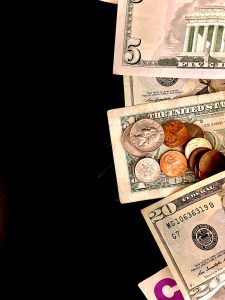Forex patterns are a great way to analyze the market and make informed decisions about your trades. There are several different types of patterns that traders use to predict market trends, and learning how to identify these patterns can be a valuable skill for any forex trader.
In this article, we will take a look at some of the most common forex patterns and provide tips on how to recognize them in the market.
1. Trend lines
One of the simplest and most effective ways to identify a forex pattern is by drawing trend lines. A trend line is a straight line that connects two or more price points and can be used to identify support and resistance levels in the market.
To draw a trend line, you need to identify at least two points on the price chart and connect them with a straight line. If the price moves in the direction of the trend line, it can be considered a bullish trend, while a bearish trend is indicated by a price movement in the opposite direction.
2. Head and shoulders
Another common forex pattern is the head and shoulders pattern. This pattern is formed when the price of an asset rises to a peak, then falls back and rises again to a higher peak before falling back again. The peaks are referred to as the “head” and “shoulders,” and the pattern indicates a potential reversal in the market.
To identify a head and shoulders pattern, look for a peak followed by a pullback, then a higher peak followed by a larger pullback. This creates the shape of a head and shoulders, and the pattern is confirmed when the price falls below the neckline of the pattern.
3. Double top/bottom
The double top/bottom pattern is another common forex pattern that indicates a potential reversal in the market. This pattern is formed when the price of an asset reaches a peak or bottom, then falls back before rising again to the same level. If the price falls below the previous low or rises above the previous high, it confirms the pattern.
To identify a double top/bottom pattern, look for two peaks or bottoms at the same level, separated by a pullback. The pattern is confirmed when the price falls below the previous low or rises above the previous high.
4. Flags and pennants
Flags and pennants are continuation patterns that indicate a potential trend continuation after a brief pause in the market. These patterns are formed when the price of an asset moves in a strong trend, then consolidates in a narrow range before continuing in the same direction.
To identify a flag or pennant, look for a sharp price move followed by a period of consolidation in a narrow range. The pattern is confirmed when the price breaks out of the consolidation range in the direction of the original trend.
5. Fibonacci retracements
Fibonacci retracements are a popular tool used by forex traders to identify potential support and resistance levels in the market. These levels are based on the Fibonacci sequence, a mathematical series that is found in nature and often appears in financial markets.
To use Fibonacci retracements, first identify a significant price move in the market. Then, draw lines at the 38.2%, 50%, and 61.8% retracement levels of that move. These levels can act as potential support and resistance levels in the market, and traders often use them to identify entry and exit points for their trades.
Conclusion
Learning how to identify forex patterns is an essential skill for any trader looking to make informed decisions in the market. By understanding the different types of patterns and how to recognize them, you can develop a more comprehensive trading strategy and increase your chances of success. Remember to always do your research and use a combination of technical and fundamental analysis to make informed decisions about your trades.





